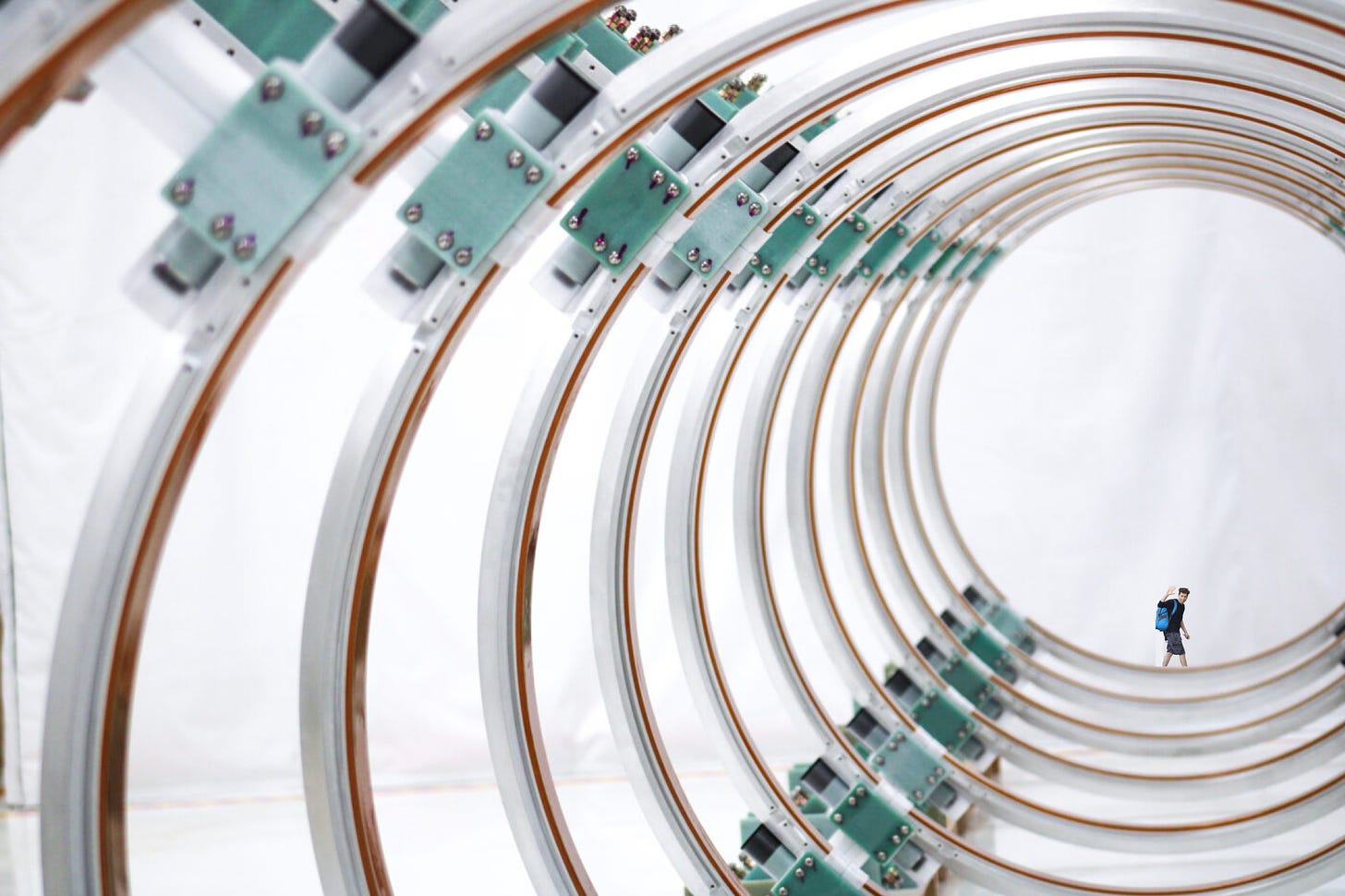A Second Nuclear Age is Upon Us?
Both these new fusion announcements and next-generation fission reactors appear to be viable sooner than expected.
(1) Microsoft Bets That Fusion Power Is Closer Than Many Think
Jennifer Hiller for The Wall Street Journal
In a deal that is believed to be the first commercial agreement for fusion power, the tech giant has agreed to purchase electricity from startup Helion Energy within about five years. Helion, which is backed by OpenAI founder Sam Altman, committed to start producing electricity through fusion by 2028 and target power generation for Microsoft of at least 50 megawatts after a year or pay financial penalties.

Sam Altman. So hot right now. Sam Altman.
As if leading the generative AI renaissance wasn’t enough, Altman’s nuclear fusion company, Helion, just inked the first ever commercial nuclear fusion deal. The deal between Helion and Microsoft is a bold one: it’s based on Helion’s commitment to start producing and providing electricity through fusion in the next 5 years. The main hurdle is, of course, that neither Helion nor any other organization in the world has ever produced commercial-scale electricity through fusion.
Fusion is the Holy Grail of energy. As Altman put it, the promise of fusion is that it will “power the world and to do it extremely cheaply.” Such abundant, cheap energy would have second and third order effects on progress that are hard to predict. However, nuclear fusion has been one of those technologies that’s always, as Fran Fraschilla* would say, “a couple years away from being a couple years away.”
When scientists at the National Ignition Facility at Lawrence Livermore National Laboratory finally achieved net energy gain in December 2022, the excitement was matched with reminders that commercialization of fusion might still be decades away. Welp, at least on paper, the commercialization of fusion is upon us.
Whether Helion hits the 2028 goal or not — and it has to pay financial penalties to Microsoft if it doesn’t — absurdly ambitious timelines can be useful in accelerating entire industries. See: Tesla and SpaceX.
*Yes, we just quoted basketball scout Fran Fraschilla in our analysis of nuclear fusion.
(2) US support for nuclear power soars to highest level in a decade
Akielly Hu for Grist
A Gallup survey released in late April found that 55 percent of U.S. adults support the use of nuclear power. That’s up four percentage points from last year and reflects the highest level of public support for nuclear energy use in electricity since 2012.

Not be outdone by its nuclear brother, nuclear fission is also having a bit of a moment. The oft-misunderstood energy source, which produces about ~20% of electricity in the U.S., reached its highest level of support in the US since 2012.
As we wait for truly commercially available nuclear fusion, increased nuclear fission energy output presents one of the best paths towards a cleaner energy future. Despite its current output and future potential, nuclear fission struggles from a pretty bad stigma that prevents it from gaining widespread support. The public stigma stems from two primary sources:
- Historical Events: Chernobyl in 1986, the Three Mile Island in 1979, and Fukushima in 2011.
- Lack of Understanding/Word Association: People associate nuclear power with nuclear bombs. Not a great comp! Second, people are afraid of nuclear waste and radiation. Third, it’s hard to not worry when you think Homer Simpson is responsible for keeping you safe. D’oh!

But when you peel back the stigma, it becomes quite obvious that the promise of nuclear far outweighs the negative. Or at least, that’s an opinion, according to this Gallup survey that more and more Americans are starting to adopt.
That’s a good backdrop for nuclear startups. A couple weeks ago, a16z’s American Dynamism practice announced that it’s leading the Series B for Radiant Industries, which “is building portable 1-megawatt nuclear reactors, the size of a shipping container, that can reliably produce power for 20 years.” We’re pretty excited about Aalo Atomics, too.

